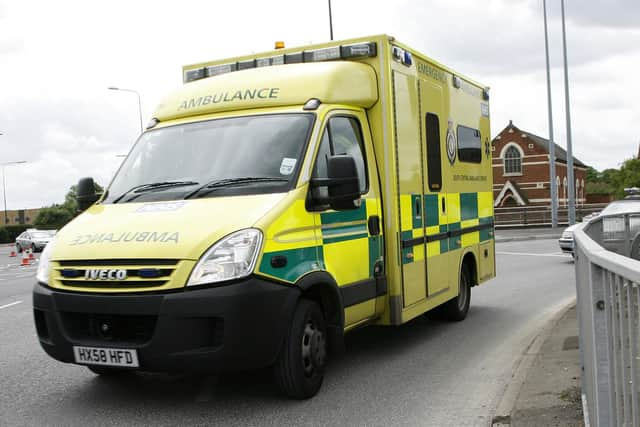Ambulances in Hampshire pioneer new 'robot paramedic' to conduct CPR
and live on Freeview channel 276
South Central Ambulance Service (SCAS), which covers Hampshire and other counties, is the first in the country to take the new state-of-the-art technology, known as LUCAS 3, onboard its vehicles.
The device is a mechanical system which can deliver high-quality cardiopulmonary resuscitation (CPR) chest compressions consistently from the moment crews arrive on scene and throughout a patient’s journey to hospital without interruption.


Advertisement
Hide AdAdvertisement
Hide AdCPR is essential to maintaining blood and oxygen flow around the body while a person is unconscious and not breathing.
An SCAS spokesman said: ‘Once paramedics arrive and begin CPR or take over from bystanders who may have initiated it, the transition from manual compressions to LUCAS (the robotic system) can be completed within seven seconds, ensuring continuity of compressions.’
The system uses wireless Bluetooth connectivity, allowing it to configure the compression rate, depth and alerts specific to an organisation’s resuscitation guidelines.
It also means it can collect data which can be reviewed post-event and shared with other clinicians.
Advertisement
Hide AdAdvertisement
Hide AdDr John Black, medical director at SCAS, said: ‘We know that delivering high quality and uninterrupted chest compressions in cardiac arrest is one of the major determinants of survival to hospital discharge but it can be very challenging for a number of reasons.
‘People can become fatigued when performing CPR manually which then affects the rate and quality of compressions, and patients may need to be moved from difficult locations, such as down a narrow flight of stairs, or remote places which impedes the process.
‘There are also significant safety risks to ambulance personnel being unrestrained and performing CPR in the back of vehicles travelling at high speed.
‘These devices don’t fatigue or change the delivery in any way, meaning high quality CPR can be delivered for as long as is required while freeing up the paramedic, keeping them seated and belted and able to focus on other critical aspects of patient care on a journey.
Advertisement
Hide AdAdvertisement
Hide Ad‘It ultimately acts as a robotic third crew member for our teams.’
SEE ALSO: Warning as numbers attending A&E rise
South Central Ambulance Charity has funded 28 of the devices to support crews across Oxfordshire, Berkshire, Buckinghamshire and Hampshire.
LUCAS devices are also used for resuscitation in hospital emergency departments and to support patients in cardiac arrest in intensive care units, as well for patients undergoing life-saving coronary balloon angioplasty and stenting procedures to widen narrowed arteries.
A message from the Editor, Mark Waldron
You can subscribe here for unlimited access to our online coverage, including Pompey, for 27p a day.
Comment Guidelines
National World encourages reader discussion on our stories. User feedback, insights and back-and-forth exchanges add a rich layer of context to reporting. Please review our Community Guidelines before commenting.
